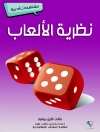In her enchanting collection, ‘The Three C’s (Illustrated Edition), ‘ Edith Nesbit weaves together three whimsical tales: ‘The Cockatoo, ‘ ‘The Cat, ‘ and ‘The Crayfish, ‘ each imbued with her signature blend of humor and naturalism. Her narrative style, characterized by a fluid prose that effortlessly oscillates between playful dialogue and rich descriptions, invites readers into a vividly imagined world where the ordinary mingles with the extraordinary. Set against the backdrop of the late Victorian era, a time brimming with rapid social change and evolving notions of childhood, Nesbit’s stories reflect her deep understanding of the complexities of human nature and familial dynamics, skillfully captured through her captivating storytelling. Edith Nesbit, a trailblazer in children’s literature, was significantly influenced by her own experiences of hardship and adventure, having been raised in a politically active, artistic family. Her radical views on social issues, alongside personal encounters with loss and love, permeate her work, imbuing her narratives with a profound sense of empathy and authenticity. Nesbit’s pioneering spirit paved the way for factors of modernism in children’s literature, making her a vital figure in literary history. This illustrated edition of ‘The Three C’s’ offers readers an opportunity to immerse themselves in Nesbit’s imaginative brilliance, making it a delightful addition for both children and adults alike. With its timeless themes and charming illustrations, the book beckons readers to explore the beauty and complexity of life through the lens of childhood wonder, making it a perfect choice for those seeking both entertainment and reflection.
Over de auteur
Edith Nesbit (1858–1924), a name that is often accompanied by a sense of nostalgia for many readers, was an English author and poet, acclaimed for her innovative contributions to children’s literature. Nesbit’s works were revolutionary in that they moved away from the didactic and moral tales that prevailed in the Victorian era, instead imbuing her stories with lively characters, relatable plots, and a blend of magic and everyday life that would later influence writers such as C. S. Lewis and J. K. Rowling. Among her extensive bibliography, which includes more than 60 books of children’s literature, poetry, and horror stories, ‘The Three C’s (Illustrated Edition)’ stands out as an example of her literary style that often combined charming illustrations with engaging narratives. Her narratives were distinguished by her ability to craft stories from the child’s perspective—a novelty at the time of her writing—which allowed young readers to see themselves within the fabric of her tales. Moreover, Nesbit is remembered for her oeuvre as a founding figure of the genre now called children’s literature. She was a prominent member of the Fabian Society, and her works also subtly reflected her political and social beliefs. Nesbit’s influence has been extolled by literary critics and she remains a cherished author whose stories continue to inspire whimsical dreams and adventures among readers of all ages.












